After six days at sea, we finally spotted land: Hawaii, the Big Island, straight ahead! The state of Hawaii encompasses hundreds of islands spread over 1,500 miles. At the southeastern end of the Hawaiian archipelago, the eight main islands are – in order from northwest to southeast – Niihau, Kauai, Oahu, Molokai, Lānai, Kahoolawe, Maui, and the the Big Island of Hawaii.
A volcanic hot spot formed all the islands in the Hawaiian chain. A constant flow of magma built up an island which moved northwest as the Pacific plate moved. Over time, as the islands move away from the hot spot, the volcanoes become dormant, and the islands erode. Gradually the island becomes an atoll which eventually sinks back into the ocean. Here is a good diagram which might help you understand the process.
The islands move very slowly, about four to six inches per year, so it is difficult to discern. But the Big Island of Hawaii is the only island with an active volcano because it is the only one over the hot spot.
The eight main islands of Hawaii are the most recently formed islands. Kahoolawe is uninhabited by people. Niihau is privately owned and has the largest group of “pure” Hawaiians: people who have deliberately restricted their exposure to other cultures. Outsiders are not allowed to visit Niihau and residents of Niihau who chose to marry outside the native Hawaiian population are not allowed to return to the island.
The state of Hawaii has 1.5 million residents with the vast majority, 1 million, on Oahu. Eight million tourists visit per year, most of them staying on Oahu. Hawaii is the only state where the majority ethnicity is Asian. You especially notice this in Honolulu where we felt like a minority! Hawaiians eat the most Spam per capita of any state and use it in all kinds of interesting ways in recipes.
Our first island stop was the Big Island of Hawaii. We took a day-long bus tour with about 15 other people. Our guide’s name was Aaron and he did a terrific job. We started out in Hilo and Aaron told us about the dry (leeward or kona) and wet (windward or ko’olau) sides of the island. The wet side of an island gets more than 300 inches of rainfall a year. The dry side of an island typically gets fewer than 15 inches of rain a year. In other words, said Aaron, “in Kona you get sunburned; in Hilo you rust.”
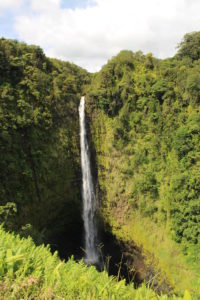
We saw two beautiful waterfalls on the Big Island. Both are close to the harbor, so both of them get lots of visitors every year. The first is Rainbow Falls in Hilo which was packed with tourists wanting to take selfies in front of the falls. After snapping a few quick pictures, Tom and I headed off on a side trail and saw a strangler fig and a huge banyan tree.
The second waterfall is Akaka Falls in a State Park close to Hilo. Not as many people visit here but there were still plenty of folks along the trail. We walked a lovely little half mile trail to see the falls and enjoyed the beautiful and exotic plantlife along the trail. We had lunch at a gardening center that specialized in orchids – more wonderful flowers!
After all that, we headed to our first Hawaiian National Park: Volcanoes. But I’m sure you have seen enough for today, so I will write about that more tomorrow.

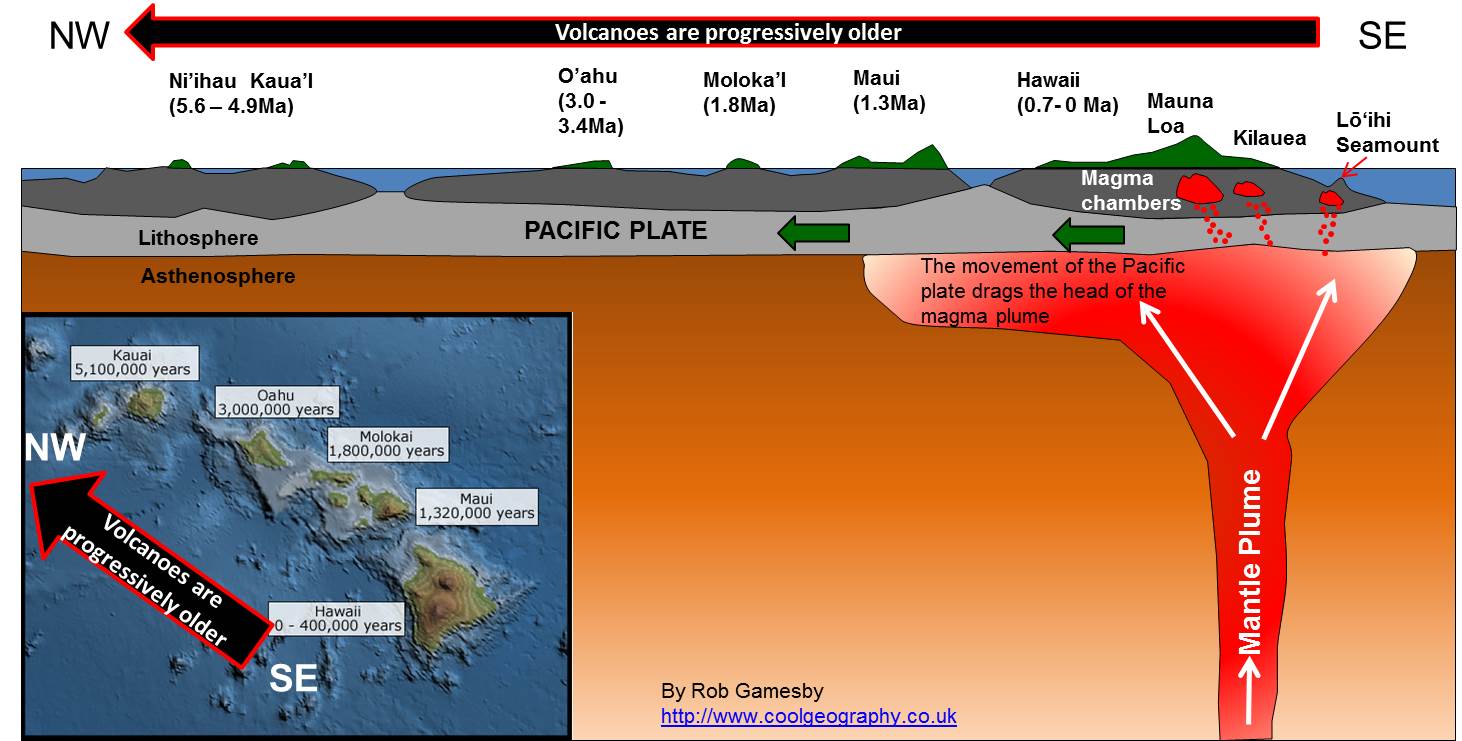
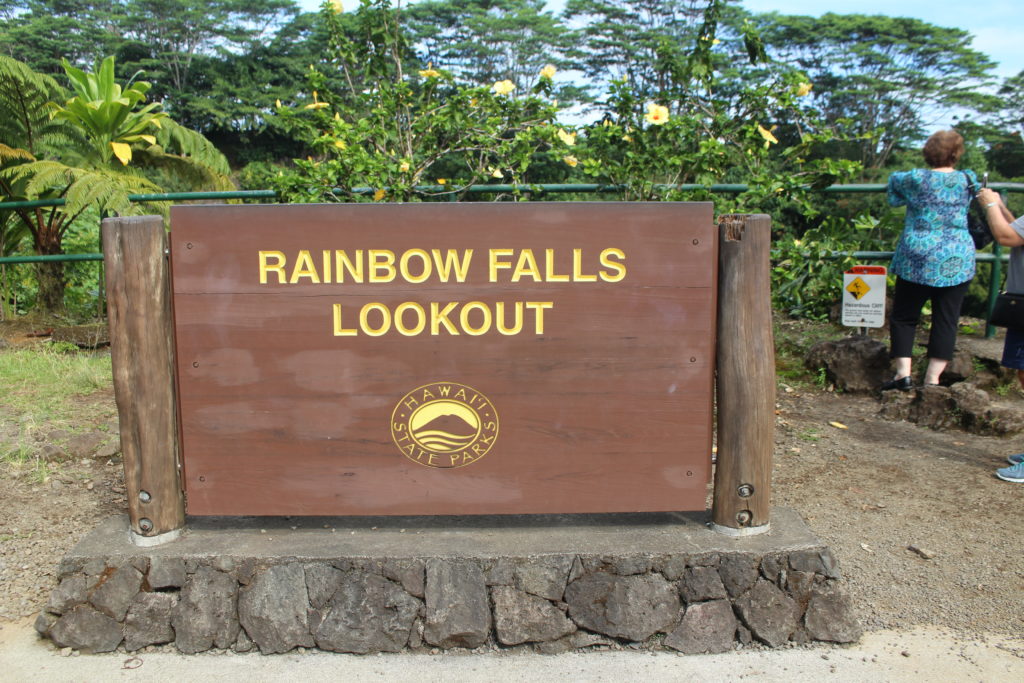
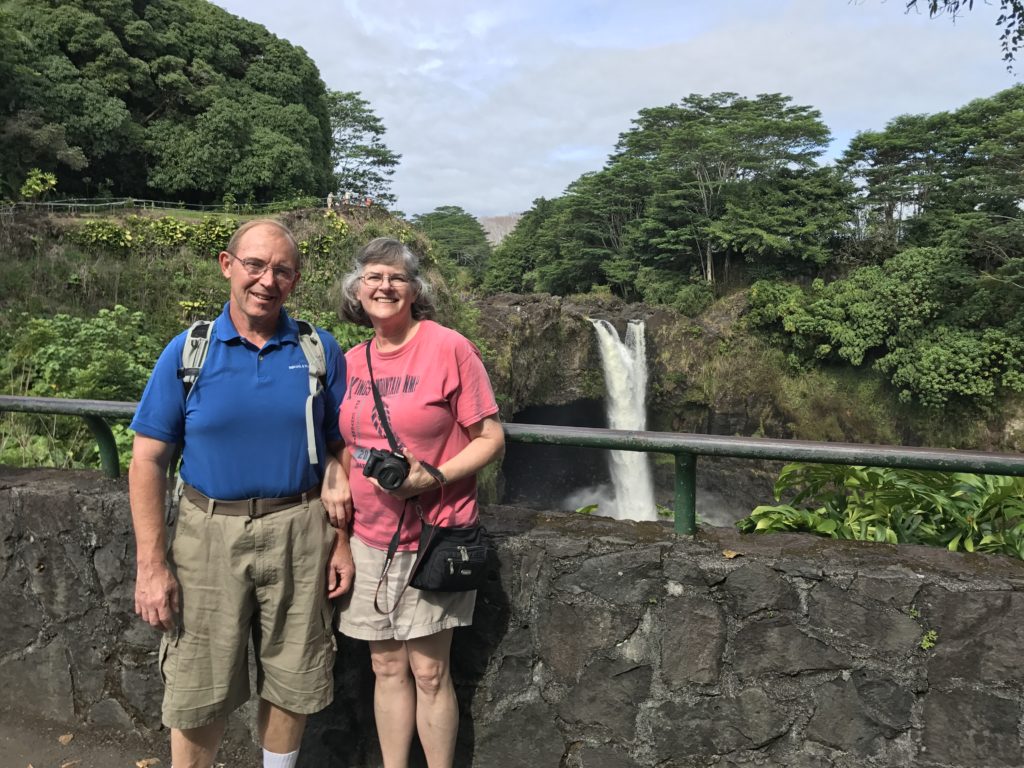
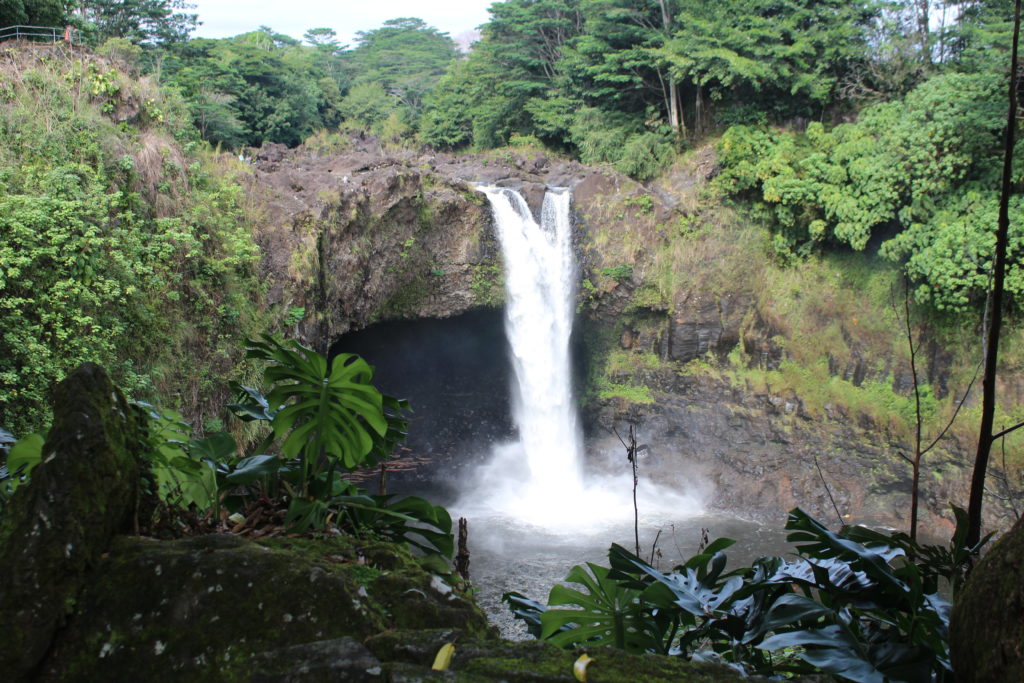

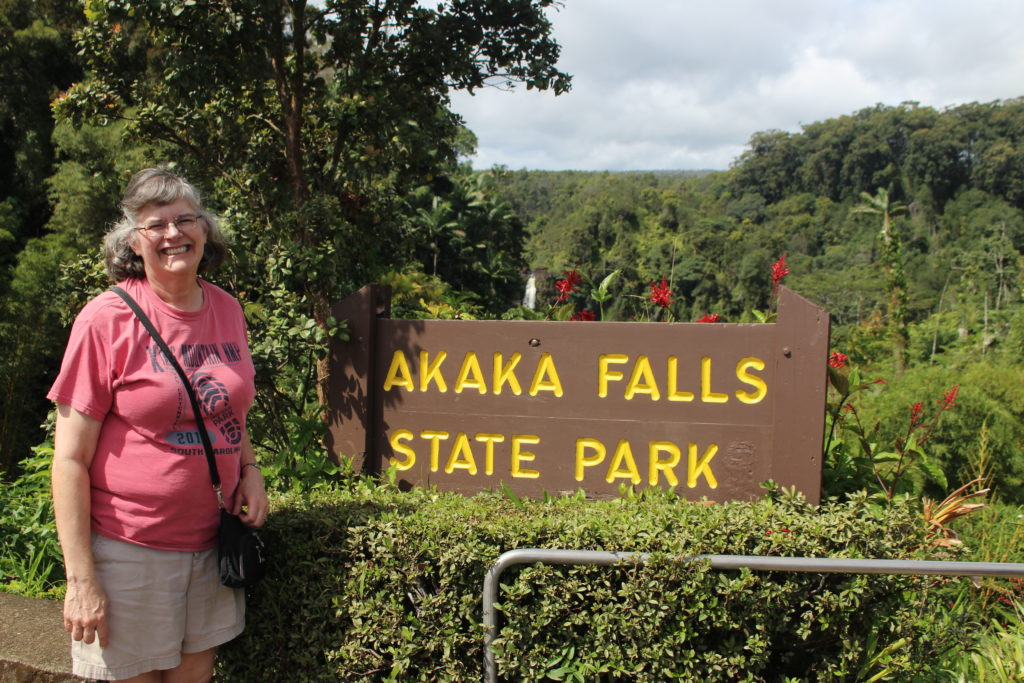
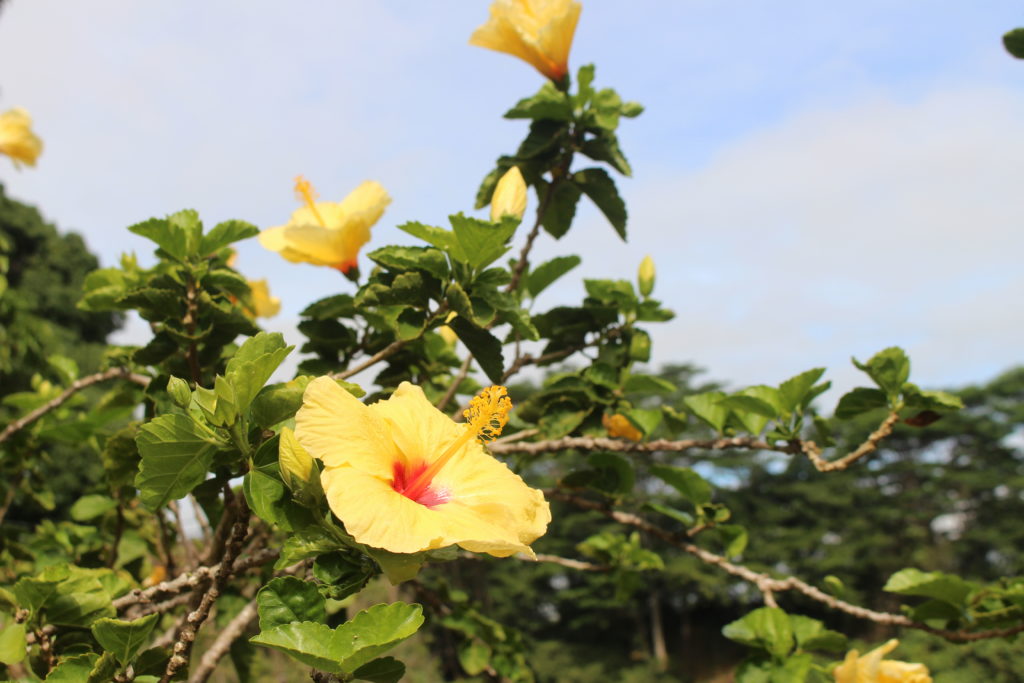
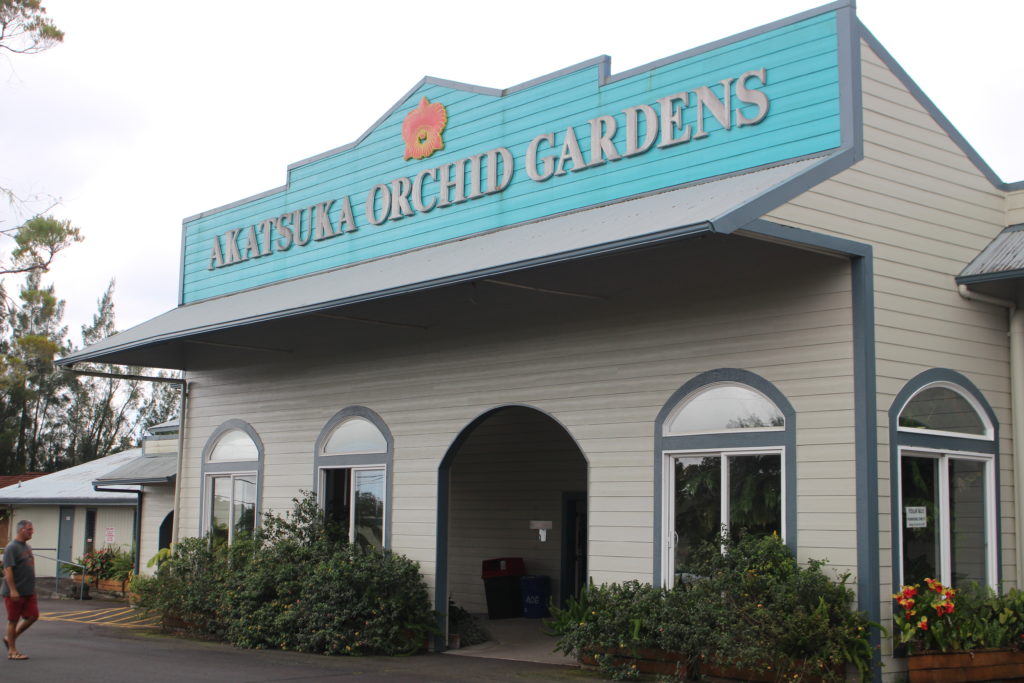
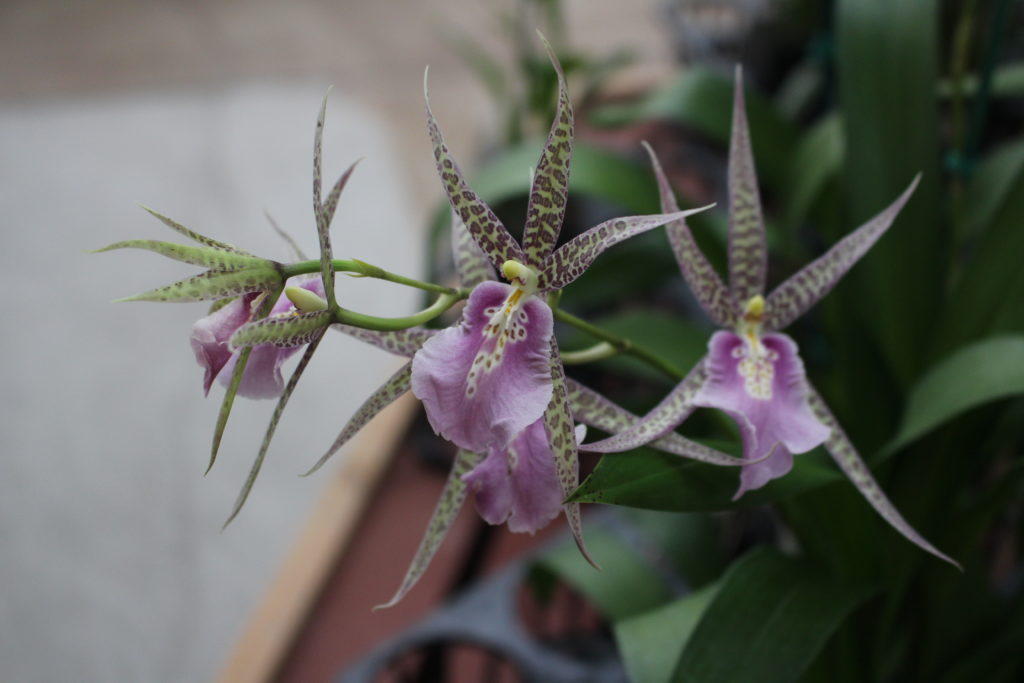
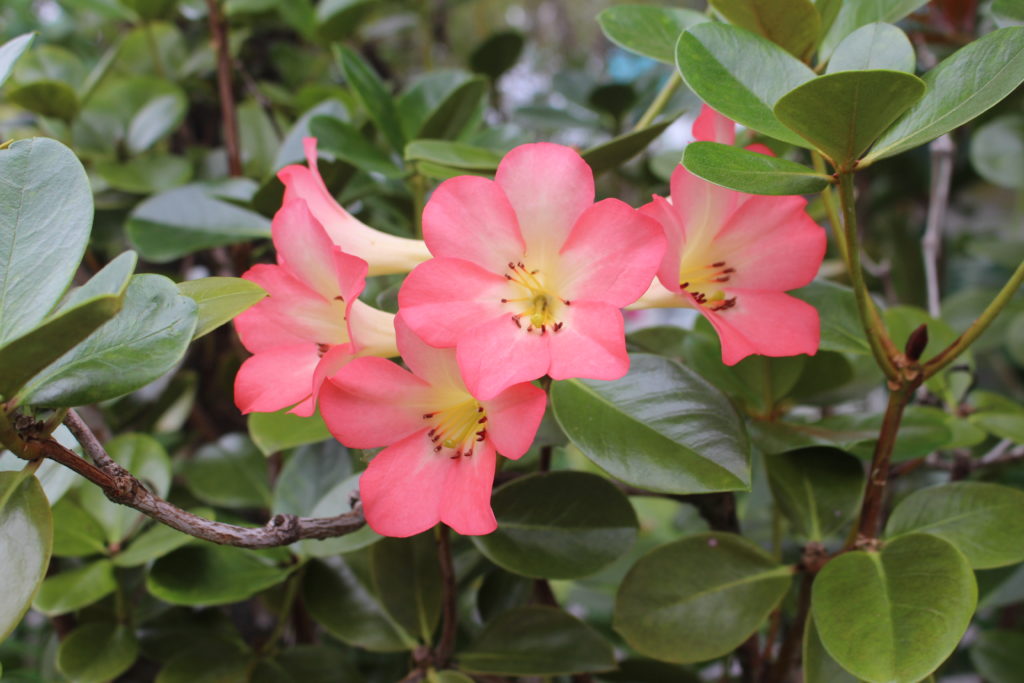
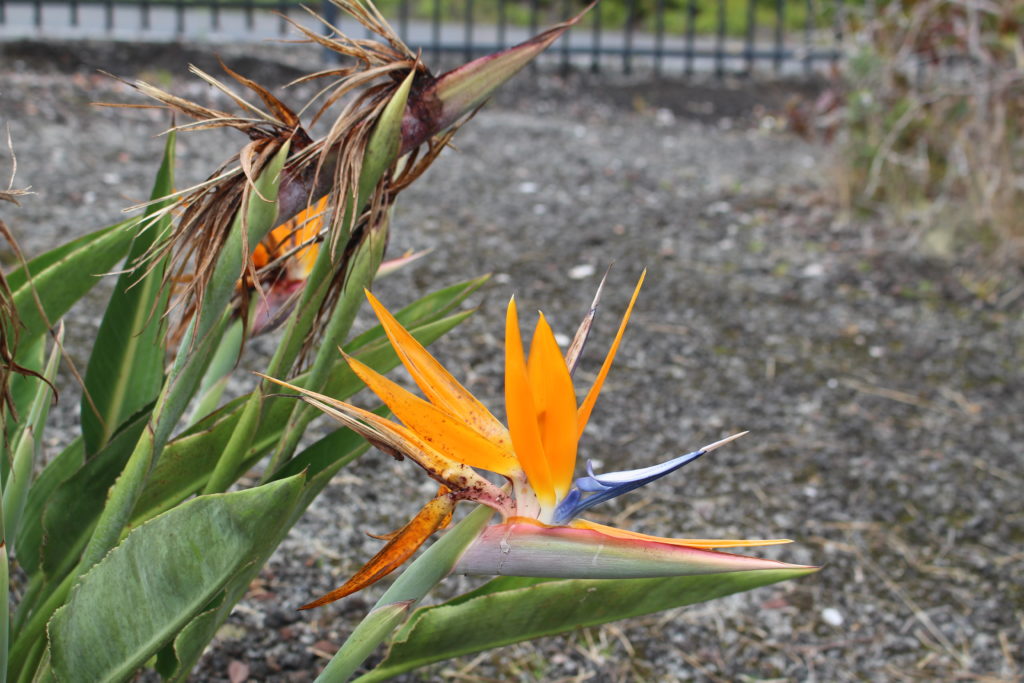
So loved the breathtaking falls & flowers!
So did we!